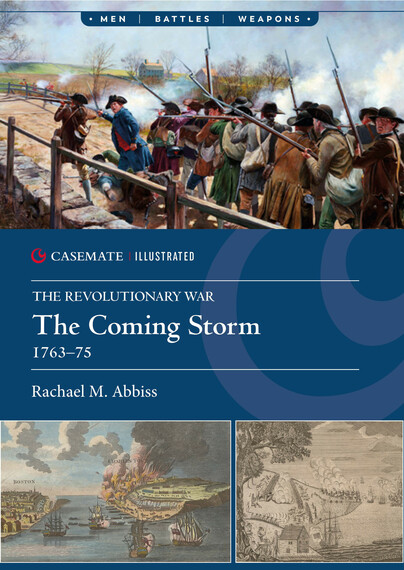
Format: Paperback
Pages: 128
ISBN: 9781636240923
Pub Date: 31 Dec 2024
Series: Casemate Illustrated
Illustrations: 100 photographs and illustration
Description:
The 17th and 18th centuries witnessed a period of almost constant conflict in Europe and North America. In New England, the threat of invasion from the French in the North and the Spanish in the South weighed heavily on the colonists. The Crown's solution was to send an army from Britain to help govern, organise and protect the colonies, but ultimately this was not enough to secure loyalty and quell the whispers of revolt.
For over a century, discontent simmered, but allegiance to the Crown and the military protection provided by Britain superseded – at least initially – the majority of grievances. Before 1763, many colonists fought for King and Country during multiple battles and the monarchy had demonstrated an ability to support and defend the colonies. Over time, however, Britain and the colonists disagreed on methods of governance and taxation, and how best to protect territory and trade. As wars waged on, allegiances became strained and imperial control required a different and perhaps more considered approach. This was not forthcoming, as Crown and Parliament continued to tighten political and economic rule, which both divided and provoked the colonists. Some, such as the political propagandist Thomas Paine, eventually argued: 'the period of debate is closed… 'TIS TIME TO PART.'
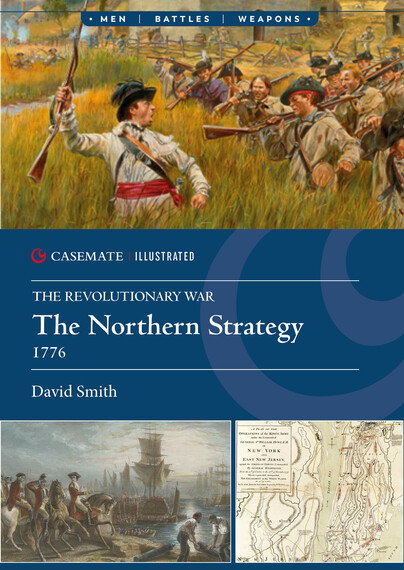
Format: Paperback
Pages: 128
ISBN: 9781636240787
Pub Date: 31 Dec 2024
Series: Casemate Illustrated
Illustrations: 100 photographs and illustration
Description:
Having declared their independence, Britain's former colonies in North America would need to fight for their liberty. The response from the other side of the Atlantic was slow, but when it arrived it appeared overwhelming. Hundreds of ships and tens of thousands of troops gathered to re-establish the Crown's control.
If the Revolution was not to die in its first year, the Americans would need to take on the largest expeditionary force ever sent by Great Britain up to that point… with an army of amateurs.The 1776 campaign saw a nearly uninterrupted string of British victories; at Long Island, White Plains and Fort Washington the Americans proved unable to stand against the disciplined regulars led by General William Howe, who received a knighthood for his efforts. The war appeared all but over as General George Washington led the tattered remnants of his army to safety at the end of the year, but as British thoughts turned to the next campaign, Washington showed that he was not yet finished, winning significant morale-boosting victories at Trenton and Princeton.Detailing the armies, commanders, strategies and tactics employed on both sides, The Northern Strategy, 1776 takes a fresh look at one of the most remarkable campaigns of the 18th century, one in which the British failed to secure their longed-for knockout blow and instead found themselves drawn into a long and painful war of attrition.
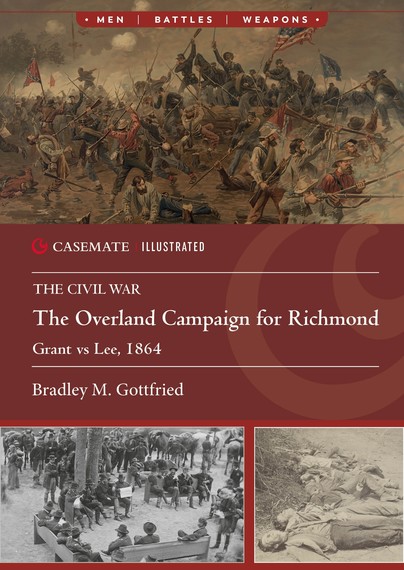
Format: Paperback
Pages: 128
ISBN: 9781636243924
Pub Date: 15 Nov 2024
Series: Casemate Illustrated
Description:
A full account of the Wilderness to the James River, including Grant's rise to high command, the condition of the armies going into the critical 1864 campaign, a deep look at the commanders on both sides, and the strategy of the campaign from both perspectives. The study is combat, strategy, and tactics from the first day of action until the last, when Grant—unable to capture Richmond, but now south and east of the capital—builds a long bridge and crosses the James River to attack Petersburg. Illustrated by photographs and excellent maps, it will conclude with a note about visiting the battlefields, the casualties, the treatment of wounded, and the burial of the dead.
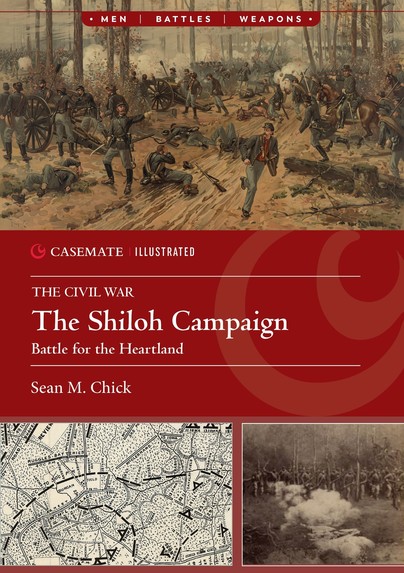
Format: Paperback
Pages: 128
ISBN: 9781636243696
Pub Date: 15 Nov 2024
Series: Casemate Illustrated
Illustrations: 100-120 photographs, artworks and maps
Description:
After taking Forts Henry and Donelson, the Union army prepared to try and take the vital rail hub of Corinth, Mississippi. To facilitate this, Major General H. Halleck planned to combine Grant’s Army of West Tennessee with Buell’s Army of the Ohio.
Meanwhile the newly formed Confederate Army of the Mississippi was placed under the command of General A. S. Johnston. Johnston planned to attack Grant’s encampment before Grant and Buell could combine their commands.The Confederate army left Corinth and marched north into Tennessee. On the morning of April 6, 1862, Johnston attacked at Shiloh, taking Grant’s forces by surprise. Grant’s troops put up a tenacious defense with their backs against the Tennessee River. Unfortunately for the Confederates, Johnston was killed early that afternoon. Buell’s army arrived that night and next morning launched a counterattack along with Grant’s semi-organized survivors. The Union forces were too large to be stopped, and after a stout defensive effort Beauregard ordered a withdrawal. The first great bloodbath of the Civil War was over, resulting in up to 30,000 killed, wounded, and captured. Its ramifications would be felt for the rest of the war.Illustrated with photographs, paintings and maps, this is a full account of the first large set-piece battle of the war, the only time a large Union army was taken by surprise.
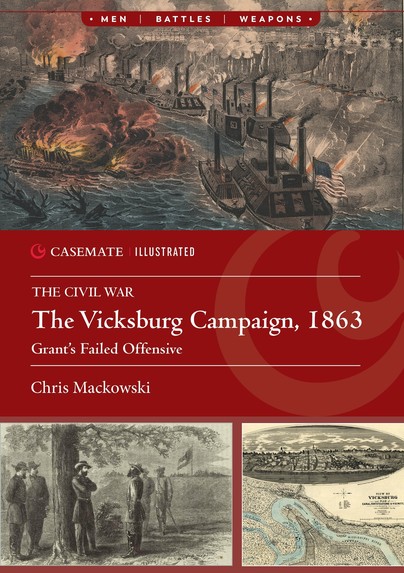
Format: Paperback
Pages: 128
ISBN: 9781636243733
Pub Date: 15 Nov 2024
Series: Casemate Illustrated
Illustrations: 100-120 photographs, artworks and maps
Description:
The 14-month campaign to regain the control of Mississippi River by capturing Vicksburg, Mississippi stands as the prime example of how the Civil War would be fought and won. The Federal government’s policy of blockading the southern ports and controlling the inland waterways would only be successful with total control of the country’s largest river. Technological advances created by the war itself and used by progressive thinking Federal and Confederate commanders ensured that this vital southern supply and logistics base would be the focal point of the war on the western waters.
Ulysses S. Grant, who had risen to fame as one of the North’s prominent heroes early in the war, boldly concluded that Vicksburg would be the next nut to crack in the Federal policy for control of the Mississippi River. Understanding that only a strong relationship with US Navy could ensure the success of Vicksburg’s surrender, Grant found a man as bold and daring as himself in David Dixon Porter and his Mississippi Squadron of ironclad gunboats and fleet of vessels. These two commanders and their trusted subordinates would frustrate John C. Pemberton’s attempts to defend Mississippi and eastern Louisiana for the Confederacy. A lack of experience in commanding such an important assignment, limited resources, poor staffing, and a Confederate government consumed with the war in the east ensured Pemberton’s position would be insurmountable as the Confederacy’s tenuous hold on the Mississippi River began to fall apart.

Format: Paperback
Pages: 128
ISBN: 9781636243900
Pub Date: 15 Nov 2024
Series: Casemate Illustrated
Illustrations: 100– illustrations
Description:
By the end of March 1863, Major General Ulysses S. Grant was at a crossroads in his military career. His bold attempts in the late fall 1862 and winter of 1862/63 had all come up fall short of his objective: get his army on high ground north and east of Vicksburg and capture the last major obstacle on the Mississippi River.
Grant had been stymied by the difficult region’s swampy bayous as well as Confederate resistance at key locations that thwarted his advances and prolonged his army’s miserable dispositions in the sickly camps of Louisiana bottomland. Confederate Lieutenant General John C. Pemberton had performed well using his interior rail lines and intelligence networks to place blocking forces or obstructions that delayed or derailed Grant’s movements.Realizing his career was on the line, Grant chose the riskiest operation he could have concocted. In a joint military operation, Grant marched two of his army corps down the roads and along the bayous of Louisiana, repairing them as they progressed, while Acting Rear Admiral David Dixon Porter led his ironclad gunboats with transports past the Confederate heavy artillery defending Vicksburg’s riverfront. It was Grant’s hope to get enough boats below the city to enable a crossing of the Mississippi River, a forced march into the state, and arriving at Vicksburg’s doorsteps from the east–west approach. In doing this, Grant would severe his main line of logistics and supply, something his subordinate officers thought was a disastrous mistake. Grant would take the risk in a zero-sum game: he would capture Vicksburg or destroy himself and his army doing so.This Casemate Illustrated examines the movements of the Union and Confederate armies from March 1863 through July 1863, the joint-operational cooperation between the U.S. Army and U.S. Navy, the delayed and indecisive Confederate operations to stop the Federal initiative, and how the individual soldiers conducted the one of the greatest campaigns in American military history: to control the “The Father of Waters”—the Mississippi River.
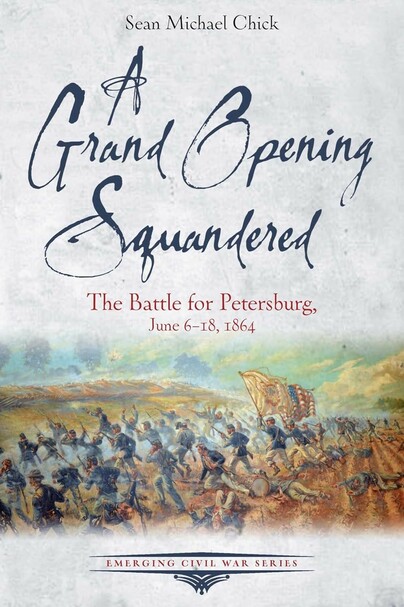
Format: Paperback
Pages: 192
ISBN: 9781611217216
Pub Date: 15 Oct 2024
Series: Emerging Civil War Series
Illustrations: 100 images, 10 maps
Description:
May and June 1864 in Virginia witnessed some of the most brutal and bloody fighting of the Civil War. After the Wilderness, Spotsylvania Court House, North Anna, and Cold Harbor, combined losses for the two armies exceeded 80,000 men killed, wounded, and captured. And the result after all that carnage was a stalemate outside the gates of Richmond.
Federal Lt. Gen. Ulysses S. Grant remained undeterred and set his armies toward their next target: The logistical powerhouse of Petersburg. Grant’s surprising maneuver, which included the construction of a massive pontoon bridge across the broad James River and a surprise march against Petersburg, caught Confederate commander Robert E. Lee by surprise. Petersburg was but lightly guarded and seemed at the mercy of the aggressive Federal commander. Its fall would cut the lifelines into Richmond and force the evacuation of the Southern capital. The capture of the city would ensure President Abraham Lincoln’s reelection and eliminate whatever thin hopes the Confederacy still had for victory.Petersburg was fortified, its garrison small but determined to hold the city. Department commander, Gen. P. G. T. Beauregard, realized the danger and shifted as many men as he could spare into the defenses and took the field himself. North of the river, meanwhile, Lee remained unconvinced that Grant had stolen a march on him. Three days of battle (June 15-17) followed. The Federals bungled the effort, and somehow the understrength Confederates managed to fight the Federals to a standstill. Reinforcements from Lee’s army finally arrived on June 18. Petersburg would hold—for now.Beauregard had won one of the Confederacy’s most impressive victories and one of the Confederacy last strategic victories.Sean Chick’s A Grand Opening Squandered: The Battle for Petersburg, June 6-18, 1864 provides fresh and renewed attention to one of the most important, fascinating, and yet oddly forgotten battles of the Civil War. Inside are original maps, new research, and dozens of images—many published here for the first time. A Grand Opening Squandered is the first in a series on the Petersburg Campaign, which will provide readers with a strong introduction to the war’s longest campaign.

Format: Hardback
Pages: 320
ISBN: 9781611217179
Pub Date: 15 Oct 2024
Illustrations: 24 images, 16 maps
Description:
May 1864. The Army of the Potomac and the Army of Northern Virginia spent three days in brutal close-quarter combat in the Wilderness that left the tangled thickets aflame. No one could imagine a more infernal battlefield.
Then they marched down the road to Spotsylvania Court House.Even the march itself was unprecedented. For three years, the armies had fought and disengaged. That changed on the night of May 7. Instead of leaving the Wilderness to regroup, Lt. Gen. Ulysses S. Grant led the Federal army southward, skirmishing with Confederates all the way. “There will be no turning back,” he had declared. He lived up to his word. By dawn on May 8, the armies had tangled their way ten miles down the road and opened another large-scale fight that would last until May 21. “One thing is certain of this campaign thus far,” explained Dr. Daniel Holt of the 121st New York: “more blood has been shed, more lives lost, and more human suffering undergone than ever before in a season.”The fighting launched a score of new place names and events that would sear themselves into the American consciousness, including Laurel Hill, Upton’s assault, the Mule Shoe, the Bloody Angle, and Harris Farm. The casualties exacted at Spotsylvania would exceed those of the Wilderness by thousands. The fighting would severely test the offensive capabilities of Confederate commander Gen. Robert E. Lee’s army, just as the defensive posture his men embraced would, in turn, test the limits of Federal endurance.In A Tempest of Iron and Lead: Spotsylvania Court House, May 8-21, 1864, author Chris Mackowski has crafted a meticulous and comprehensible study of this endlessly fascinating campaign. Mackowski, long-familiar with the battle of Spotsylvania Court House, is a former historian at Fredericksburg and Spotsylvania National Military Park. Chris continues to give tours of the battlefield as the historian in residence at Stevenson Ridge, a historic property on the battlefield’s eastern front.His intimate knowledge of the landscape and nearly two decades of insight, together with primary source materials, outstanding maps, and helpful images, combine to create a readable and satisfying single-volume account the campaign has so richly deserved.
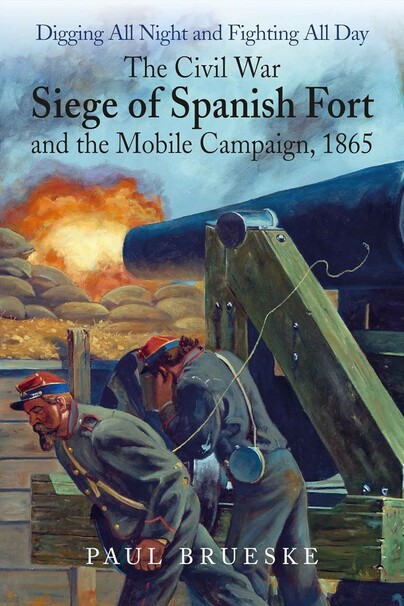
Format: Hardback
Pages: 256
ISBN: 9781611217100
Pub Date: 15 Oct 2024
Illustrations: 52 images, 9 maps
Description:
The bloody two-week siege of Spanish Fort, Alabama (March 26-April 8, 1865) was one of the final battles of the Civil War. Despite its importance and fascinating history, surprisingly little has been written about it. The fall of the fort was considered by many the key to the surrender of the important seaport of Mobile, which fell to Maj.
Gen. Edward R. S. Canby on April 12, 1865. Paul Brueske’s Digging all Night and Fighting All Day: The Civil War Siege of Spanish Fort and the Mobile Campaign, 1865 is the first full-length study of this subject.General U. S. Grant had long had his eyes set on capturing Mobile. Its fall would eliminate the vital logistical center and put one of the final nails in the coffin of the Confederacy. On January 18, 1865, Grant ordered General Canby to move against Mobile, Montgomery, and Selma, and destroy anything useful to the enemy’s war effort. The reduction of Spanish Fort, along with Fort Blakeley—the primary obstacles to taking Mobile—was a prerequisite to capturing the city.After the devastating battles of Franklin and Nashville in Tennessee in late 1864, many Federals believed Mobile’s garrison—which included a few battered brigades and most of the artillery units from the Army of Tennessee—did not have much fight left and would evacuate the city rather than fight. They did not. Despite being outnumbered about 10 to 1, 33-year-old Brig. Gen. Randall Lee Gibson mounted a skillful and spirited defense that “considerably astonished” his Union opponents. The siege and battle that unfolded on the rough and uneven bluffs of Mobile Bay’s eastern shore, fought mainly by veterans of the principal battles of the Western Theater, witnessed every offensive and defensive art known to war.Paul Brueske, a graduate student of History at the University of South Alabama, marshaled scores of primary source materials, including letters, diaries, reports, and newspaper accounts, to produce an outstanding study of a little-known but astonishingly important event rife with acts of heroism that rivaled any battle of the war.

Format: Hardback
Pages: 352
ISBN: 9781611217087
Pub Date: 15 Oct 2024
Series: Savas Beatie Military Atlas Series
Illustrations: 2 images, 122 maps
Description:
The Maps of Second Bull Run: An Atlas of the Second Bull Run/Manassas Campaign from the Formation of the Army of Virginia Through the Battle of Chantilly, June 26 – September 1, 1862, continues Bradley M. Gottfried’s efforts to study and illustrate the major campaigns of the Civil War’s Eastern Theater. This is his tenth book in the ongoing Savas Beatie Military Atlas Series.
President Abraham Lincoln’s frustration with George B. McClellan’s inability to defeat Robert E. Lee’s Army of Northern Virginia and capture Richmond dramatically increased after the unsuccessful Seven Days’ Battles. The president combined three small armies into the new Army of Virginia and placed it under Maj. Gen. John Pope, who had overseen several successes in the Western Theater.Pope’s growing aggressiveness, combined with McClellan’s passive posture on the Peninsula, forced Lee to turn his attention toward the new threat from the north. Thomas “Stonewall” Jackson moved his wing of the Army of Northern Virginia to confront Pope. A bloody battle at Cedar Mountain on August 9 halted Pope’s move south, and Jackson’s raid on the vast stores at Manassas Junction triggered another confrontation, this time at Kettle Run.As Jackson settled into a defensive position on the plains of Manassas, and with McClellan’s troops having abandoned the Peninsula, Lee moved his other wing under James Longstreet rapidly north. Pope missed an opportunity to prevent the junction of Lee’s wings by not stopping Longstreet at Thoroughfare Gap.The Battle of Second Bull Run began on the evening of August 28 when Jackson tangled with Union troops at the Brawner Farm. Pope spent much of the following day hammering Jackson’s front, with no idea that Longstreet had arrived on the field. The Union assaults continued on August 30 until Longstreet launched a massive assault that rolled up the Union left flank and collapsed Pope’s army. The retreat was briefly interrupted by some of Jackson’s units at Chantilly, which ended the campaign.The Maps of Second Bull Run plow new ground by breaking down the entire campaign into sixteen map sets or “action sections,” enriched with 122 detailed full-page color maps. These cartographic originals bore down to the regimental and battery level. They include the march to and from the battlefields and virtually every significant event in between. At least two—and as many as ten—maps accompany each map set. Keyed to each piece of cartography is a full-facing page of detailed text describing the units, personalities, movements, and combat (including quotes from eyewitnesses) depicted on the accompanying map, all of which make the cavalry actions come alive.This presentation allows readers to easily find a map and text on virtually any portion of the campaign. Serious students will appreciate the extensive endnotes and complete order of battle and take the book with them to the battlefields. A final bonus is that the maps unlock every other book or article written on any aspect of the campaign.Perfect for the easy chair or for stomping the hallowed grounds, The Maps of Second Bull Run is a seminal work that belongs on the bookshelf of every serious and casual student of the battle.
Confederate Gibraltar
The Vicksburg Campaign from the Fall of New Orleans through the Battles in the Bayou
Format: Paperback
Pages: 192
ISBN: 9781611217193
Pub Date: 15 Sep 2024
Series: Emerging Civil War Series
Illustrations: 100 images, 10 maps
Description:
Disasters threatened Vicksburg on both ends of the Mississippi River early in the war. South of the mighty bastion, New Orleans—one of the Confederacy’s most important cities—fell in April 1862. Memphis to the north fell two months later.
Vicksburg, Mississippi, stood defiantly between the captured cities atop 300-foot bluffs that dominated the wide mighty river. So long as “the Hill City” remained in Rebel hands, the Confederacy controlled river traffic and maintained a vital connection between the Trans-Mississippi states and those east of the river. Vicksburg was the “Gibraltar of the Confederacy.”Federal Maj. Gen. Ulysses S. Grant had learned how to use rivers as “water highways” to drive deep into the heartland of the Confederacy. His skillful utilization of the Tennessee and Cumberland rivers helped capture Forts Henry and Donelson and Nashville and opened the state of Tennessee and northern Mississippi to United States forces. His next goal was on the Mississippi River, “the Father of Waters” itself. That meant capturing Vicksburg.Doing so would require unparalleled cooperation from the U.S. Navy and the help of an ambitious naval commander, Admiral David Dixon Porter. The general and the admiral would spend many long months probing, maneuvering, bombarding, assaulting, and even digging in their joint effort to find a way to get at the nearly unreachable Confederate Gibraltar.Two major obstacles stood in their way. The first was Lt. Gen. John C. Pemberton and his Confederate army. Pemberton, a native Pennsylvanian who had thrown his lot in with the Confederacy, was promoted and dispatched to protect the river city after a poor performance along the southeast Atlantic coast. He had never commanded an army in the field. Many in the South doubted his loyalty as well as his abilities as a commander.The second difficulty perhaps even more formidable than Pemberton’s army was the terrain. That part of Mississippi was riddled with alluvial lowlands filled with malarial swamps and canebrakes, woods, deep bayous, and steep ridges. High-water floods and low-water navigation dangers abounded.The capture of Vicksburg was one of the longest and most complicated campaigns of the Civil War. Sadly, much of it remains murky or almost entirely forgotten to most students of the war. Historian Matt Atkinson’s Confederate Gibraltar: The Vicksburg Campaign from the Fall of New Orleans through the Battles in the Bayou is the first of three volumes on this Herculean effort to split the Confederacy asunder and open the Mississippi River to the sea.

Format: Paperback
Pages: 528
ISBN: 9781611216929
Pub Date: 15 Sep 2024
Illustrations: 48 images, 27 maps
Description:
Today, Germantown is a busy neighborhood in Philadelphia. On October 4, 1777, it was a small village on the outskirts of the colonial capital that hosted one of the largest battles of the American Revolution. George Washington’s attempt to recapture Philadelphia has been misunderstood and long overshadowed by the battles of Brandywine, Saratoga, and the difficult winter that followed at Valley Forge.
Michael C. Harris, the award-winning author of Brandywine: A Military History of the Battle that Lost Philadelphia but Saved America, September 11, 1777 (2014), has produced the first full-length book on the Battle of Germantown, lifting the pivotal engagement out of its undeserved obscurity.General Sir William Howe launched his campaign to capture Philadelphia in late July 1777. His army sailed aboard a 265-ship armada from New York and six difficult weeks later landed near Elkton, Maryland, moved north into Pennsylvania, and defeated Washington’s American army at Brandywine on September 11. Philadelphia fell soon thereafter.When he spotted an opportunity to defeat part of Howe’s army, Washington devised and launched a complex four-column attack, marching his men most of the night to strike the British early on the morning of October 4. Obscured by ground fog, the attack caught the British garrison at Germantown by surprise. With the enemy collapsing and his reserves yet to fire a shot, Philadelphia seemed within Washington’s grasp—until a series of poor decisions by the American high command around the Chew House brought about a stunning reversal of fortune that swept the Americans from the field. Although a tactical defeat, Germantown proved Continental soldiers could stand toe-to-toe with British and Hessian Regulars.Germantown is the first complete study to merge the strategic, tactical, political, and naval history of this complex regional operation and set-piece battle into a single compelling account. Harris’s sweeping prose, which begins where his award-winning Brandywine left off, relies extensively on original archival research and (to the extent possible today) personal knowledge of the terrain. Germantown is no mere retelling, but a major reinterpretation of the battle, troop movements, and decision-making (including the fascinating chess match for control of the forts along the Schuylkill River) that nearly drove the British out of Philadelphia. Twenty-seven original maps, together with illustrations and modern photos, extensive explanatory footnotes, appendices, and an order of battle support the text and provide contextual understanding of the movement of the armies and the strategic and tactical implications of this grand matching of wills.Michael Harris’s Germantown, now in paperback, sets the standard for Revolutionary War battle studies and will please the most discriminating reader.

Format: Paperback
Pages: 144
ISBN: 9781611217247
Pub Date: 15 Sep 2024
Illustrations: full color throughout
Description:
Gettysburg for Kids and Grown-ups, Too! is a book like no other. It is a family-friendly story of the Battle of Gettysburg for everyone, no matter their age.
Powerful modern images enhance an easy-to-read narrative. Fascinating sidebars create an engaging volume that is informative and entertaining but also sympathetic and reverent. Our familiar guides, Liam and Jaden, now joined by their teen brother Jesse, lead young readers and their families on a journey through the Gettysburg story that is immediate and alive.
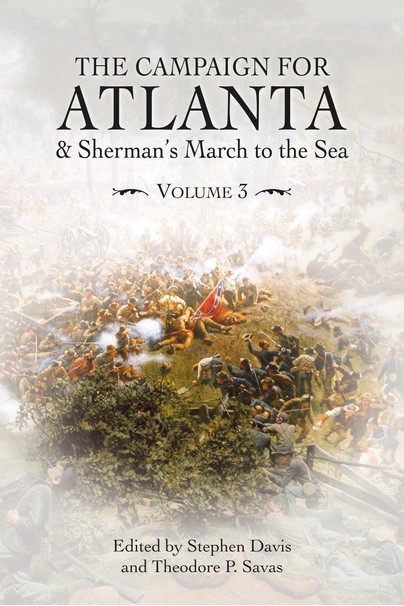
Format: Paperback
Pages: 288
ISBN: 9781611216974
Pub Date: 15 Aug 2024
Illustrations: 12 images, 6 maps
Description:
By the time Albert Castel’s Decision in the West: The Atlanta Campaign of 1864 appeared in 1992, Savas Woodbury Publishers had already made important contributions to the campaign scholarship by publishing a collection of original essays by some of the field’s most noted authors, including Steven Woodworth, writing about the Confederacy’s command options in the Winter of 1863-64. Editors Theodore P. Savas and David A.
Woodbury next assembled another group of articles that included such luminaries as Richard McMurry and William R. Scaife. The pair of paperbacks were published together in 1994 in a special hardcover edition with fold-out maps entitled The Campaign for Atlanta & Sherman’s March to the Sea, Volumes I and II. Now, almost three decades later, Savas Beatie proudly announces the publication of its third volume in the series. Once again, cutting-edge scholarship is presented in such essays as Brian Wills’ “Forrest and Atlanta” and Larry Daniel’s “The Adairsville Affair.” Stephen Davis wonders why the battle of Jonesboro (August 31-September 1) still draws so much attention when Federal troops had already cut Hood’s last railroad line into Atlanta, sealing the fate of the city even before the battle had begun.Additional essays address the impact of Sherman’s campaigns on Georgia women, Joe Johnston’s self-aggrandizing campaign accounts, and more.Like its predecessors, The Campaign for Atlanta and Sherman’s March to the Sea, Volume 3 will be highly sought by students of the campaign, and western theatrists in general.
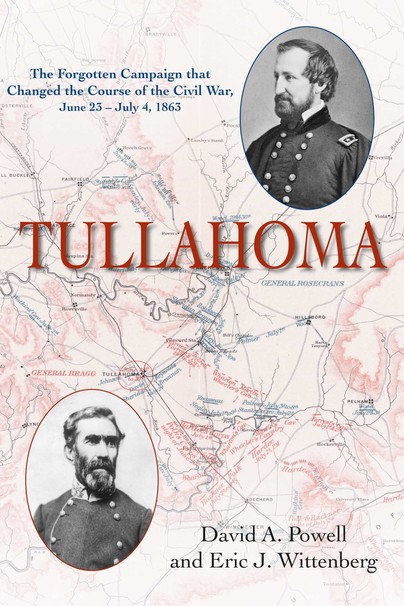
Format: Hardback
Pages: 408
ISBN: 9781611215045
Pub Date: 15 Aug 2024
Illustrations: 16 maps, 50 images
Description:
July 1863 was a momentous month in the Civil War. News of Gettysburg and Vicksburg electrified the North and devastated the South. Sandwiched geographically between those victories and lost in the heady tumult of events was news that William S.
Rosecrans’s Army of the Cumberland had driven Braxton Bragg’s Army of Tennessee entirely out of Middle Tennessee. The brilliant campaign nearly cleared the state of Rebels and changed the calculus of the Civil War in the Western Theater. Despite its decisive significance, few readers even today know of these events. The publication of Tullahoma: The Forgotten Campaign that Changed the Course of Civil War, June 23 - July 4, 1863 by award-winning authors David A. Powell and Eric J. Wittenberg, forever rectifies that oversight. On June 23, 1863, Rosecrans, with some 60,000 men, initiated a classic campaign of maneuver against Bragg’s 40,000. Confronted with rugged terrain and a heavily entrenched foe, Rosecrans intended to defeat Bragg through strategy rather than bloodshed by outflanking him and seizing control of Bragg’s supply line, the Nashville& Chattanooga Railroad, at Tullahoma and thus force him to fight a battle outside of his extensive earthworks. It almost worked. The complex and fascinating campaign included deceit, hard marching, fighting, and incredible luck - both good and bad. Rosecrans executed a pair of feints against Guy’s Gap and Liberty Gap to deceive the Rebels into thinking the main blow would fall somewhere other than where it was designed to strike. An ineffective Confederate response exposed one of Bragg’s flanks - and his entire army - to complete disaster. Torrential rains and consequential decisions in the field wreaked havoc on the best-laid plans. Still Bragg hesitated, teetering on the brink of losing the second most important field army in the Confederacy. The hour was late and time was short, and his limited withdrawal left the armies poised for a climactic engagement that may have decided the fate of Middle Tennessee, and perhaps the war. Finally fully alert to the mortal threat facing him, Bragg pulled back from the iron jaws of defeat about to engulf him and retreated - this time all the way to Chattanooga, the gateway to the rest of the Southern Confederacy. Powell and Wittenberg mined hundreds of archival and firsthand accounts to craft a splendid study of this overlooked campaign that set the stage for the Battles of Chickamauga and Chattanooga, the removal of Rosecrans and Bragg from the chessboard of war, the elevation of U.S. Grant to command all Union armies, and the early stages of William T. Sherman’s Atlanta Campaign. Tullahoma - one of the most brilliantly executed major campaigns of the war—was pivotal to Union success in 1863 and beyond. And now readers everywhere will know precisely why.
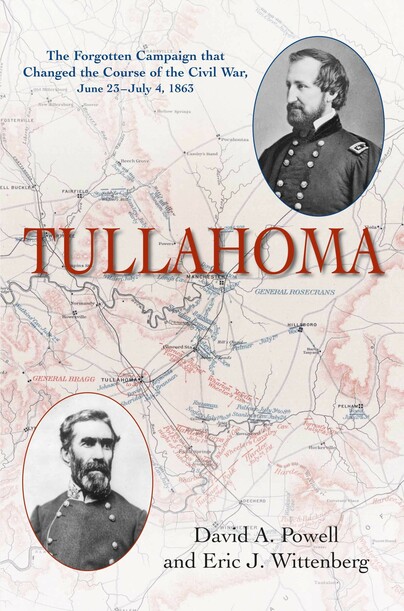
Format: Paperback
Pages: 408
ISBN: 9781611217230
Pub Date: 15 Aug 2024
Illustrations: 50 images, 16 maps
Description:
This brilliant campaign nearly cleared the state of Rebels and changed the calculus of the Civil War in the Western Theater; however, few people today even know about it. The complex and fascinating campaign included deceit, hard marching, fighting, and incredible luck—both good and bad. Powell and Wittenberg mined hundreds of archival and firsthand accounts to craft a splendid study of this overlooked campaign that set the stage for the battles of Chickamauga and Chattanooga, the removal of Rosecrans and Bragg from the chessboard of war, the elevation of U.
S. Grant to command all Union armies, and the early stages of William T. Sherman’s Atlanta Campaign.















